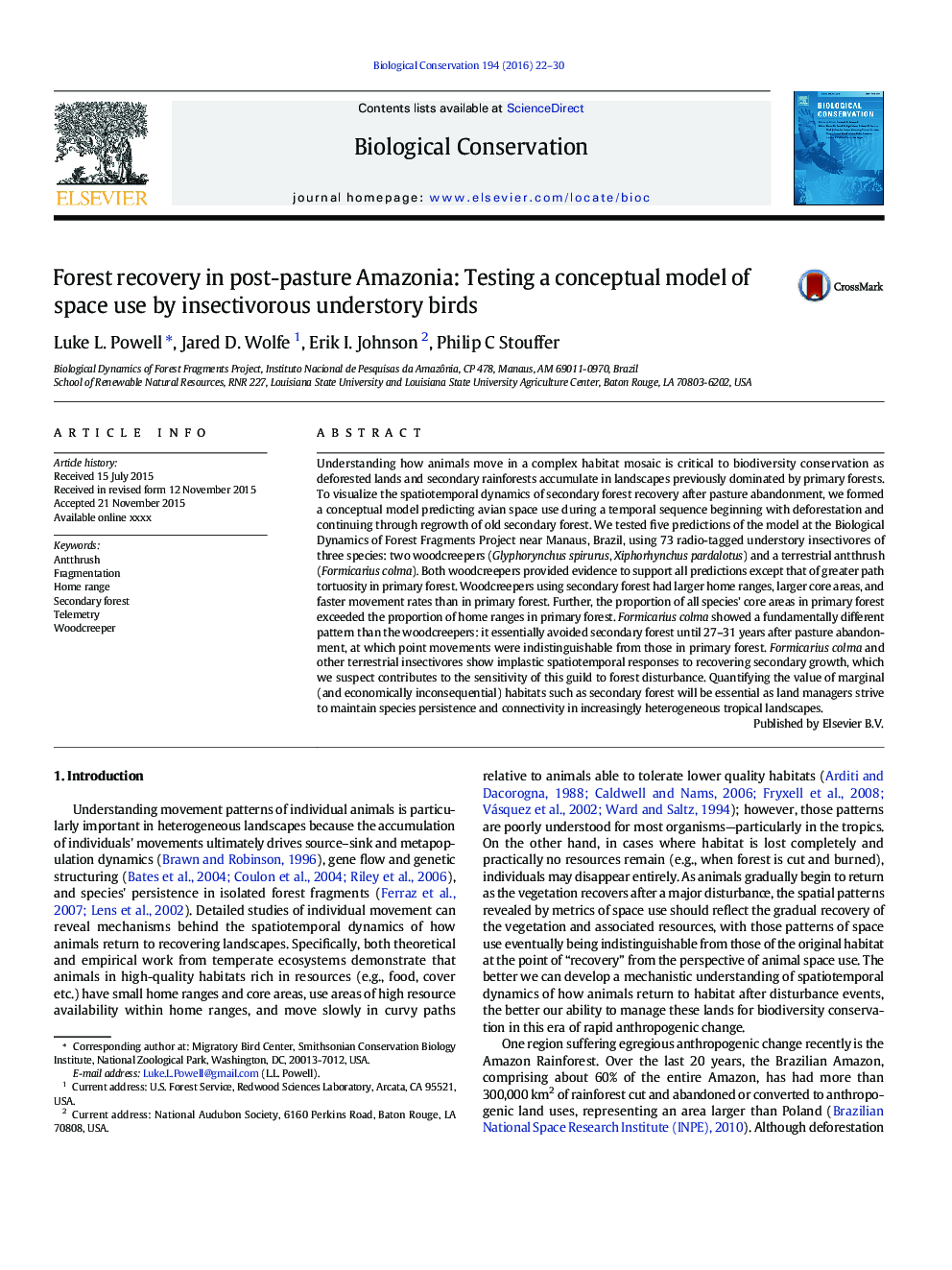| کد مقاله | کد نشریه | سال انتشار | مقاله انگلیسی | نسخه تمام متن |
|---|---|---|---|---|
| 6298773 | 1617907 | 2016 | 9 صفحه PDF | دانلود رایگان |
عنوان انگلیسی مقاله ISI
Forest recovery in post-pasture Amazonia: Testing a conceptual model of space use by insectivorous understory birds
ترجمه فارسی عنوان
بازیابی جنگل در پسزمینه آمازونیا: تست مدل مفهومی استفاده از فضای پرندگان حشره کش
دانلود مقاله + سفارش ترجمه
دانلود مقاله ISI انگلیسی
رایگان برای ایرانیان
کلمات کلیدی
موضوعات مرتبط
علوم زیستی و بیوفناوری
علوم کشاورزی و بیولوژیک
بوم شناسی، تکامل، رفتار و سامانه شناسی
چکیده انگلیسی
Understanding how animals move in a complex habitat mosaic is critical to biodiversity conservation as deforested lands and secondary rainforests accumulate in landscapes previously dominated by primary forests. To visualize the spatiotemporal dynamics of secondary forest recovery after pasture abandonment, we formed a conceptual model predicting avian space use during a temporal sequence beginning with deforestation and continuing through regrowth of old secondary forest. We tested five predictions of the model at the Biological Dynamics of Forest Fragments Project near Manaus, Brazil, using 73 radio-tagged understory insectivores of three species: two woodcreepers (Glyphorynchus spirurus, Xiphorhynchus pardalotus) and a terrestrial antthrush (Formicarius colma). Both woodcreepers provided evidence to support all predictions except that of greater path tortuosity in primary forest. Woodcreepers using secondary forest had larger home ranges, larger core areas, and faster movement rates than in primary forest. Further, the proportion of all species' core areas in primary forest exceeded the proportion of home ranges in primary forest. Formicarius colma showed a fundamentally different pattern than the woodcreepers: it essentially avoided secondary forest until 27-31Â years after pasture abandonment, at which point movements were indistinguishable from those in primary forest. Formicarius colma and other terrestrial insectivores show implastic spatiotemporal responses to recovering secondary growth, which we suspect contributes to the sensitivity of this guild to forest disturbance. Quantifying the value of marginal (and economically inconsequential) habitats such as secondary forest will be essential as land managers strive to maintain species persistence and connectivity in increasingly heterogeneous tropical landscapes.
ناشر
Database: Elsevier - ScienceDirect (ساینس دایرکت)
Journal: Biological Conservation - Volume 194, February 2016, Pages 22-30
Journal: Biological Conservation - Volume 194, February 2016, Pages 22-30
نویسندگان
Luke L. Powell, Jared D. Wolfe, Erik I. Johnson, Philip C Stouffer,
